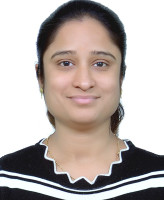

Academic Classes / Class 9 Tuition / ICSE / MATH-9 / Grade-9 ICSE MATHS
Yogesh Kumar
Student's Reviews
By Several Parameters
In Class 9, ICSE students are taught some most important and fundamental Mathematics topics. The Maths topics in ICSE Class 9 are not only important for the exam but are also crucial to understand higher level concepts later. Here are the detailed ICSE Syllabus for Class 9 Maths is provided for students to acquaint themselves with the topics that the CISCE has included in the syllabus
For attending this course, prior knowledge of Grade-9 Maths is required, this course assumes that students have prior experience with all the topics of Maths of Grade-9. This is not an introductory class for absolute beginners on Maths of Grade-9! Participants should already be familiar with chapters like algebra, trigonometry, mensuration etc.
| Course | Fee per Class (In KlassCoins) | Duration | Type |
|---|---|---|---|
| Grade-9 ICSE MATHS | 319 | 11 Months | Indiviual Classes |
I Mr. Yogesh Kumar from Uttar Pradesh, India. I am currently pursuing B.Ed from Dr. Bhim Rao Ambedkar University Agra and have already completed M.Sc(Physics) , M.A(Maths),MBA in HR from IGNOU.
I started my carrier as a Math teacher at a college and then joined a few other schools to enhance my teaching skills and for better experience in teaching feild.
I have been teaching Maths at various renowed educational instiutes and also worked at IIT Delhi as an Assistant.
-
Subject Details:
I have been working as a Teaching staff in schools with CBSE Board and at a College of state Board with NCERT Based syllabus.I can work in any enviroment with ease.
My aim is to work with an organization where I can contribute my qualifications and personal skills towards the success of the organization along with my professional career. A career that will earn me satisfaction and enable me to learn more and more in life.
Here I am to get associated with students of Garde 8-12 for all the Boards to assist them in easy learning of Maths subject.
-
Book Published Details:No data found.
-
Language Known:No data found.
-
Total Experiance:14 Years
-
Listening & Questioning Skill:No data found.
-
Reading Skill:No data found.
-
Writing Skill:No data found.
-
Presentation Skill:No data found.
-
Online classes Experiance:No data found.
-
Award Recg:No data found.
-
Research Work:No data found.
Degree: Bachelors of Science - University: Dr. Bhim Rao Ambedkar University Agra
Degree: Masters of Science - University: Dr. Bhim Rao Ambedkar University Agra
Degree:
In Class 9, ICSE students are taught some most important and fundamental Mathematics topics. The Maths topics in ICSE Class 9 are not only important for the exam but are also crucial to understand higher level concepts later. Here are the detailed ICSE Syllabus for Class 9 Maths is provided for students to acquaint themselves with the topics that the CISCE has included in the syllabus
-
Learning Objectives:
UNIT 1. Pure Arithmetic
UNIT 2. Commercial Mathematics
UNIT 3. Algebra
UNIT 4. Geometry
UNIT 5. Statistics
UNIT 6. Mensuration
UNIT 7. Trigonometry
-
Course Outline:
UNIT 1. Pure Arithmetic
Rational and Irrational Numbers Rational, irrational numbers as real numbers, their place in the number system. Surds and rationalization of surds. Simplifying an expression by rationalizing the denominator. Representation of rational and irrational numbers on the number line. Proofs of the irrationality of √2√3 √5.
UNIT 2. Commercial Mathematics
Compound Interest
(a) Compound interest as a repeated Simple Interest computation with a growing Principal. Use of this in computing Amount over a period of 2 or 3 years.
(b) Use of formula
<>< style="background-color:white">Finding CI from the relation CI = A – P.
- Interest compounded half-yearly included
- Using the formula to find one quantity given different combinations of A, P, r, n, CI and SI; difference between CI and SI type included. Rate of growth and depreciation.
UNIT 3. Algebra
CHAPTER 3.1: Expansions
Recall of concepts learned in earlier classes.
(a ± b)2
(a ± b)3
(x ± a) (x ± b)
(a ± b ± c)2
CHAPTER 3.2:Factorisation
a2 – b2
a3 ± b3
ax2 + bx + c, by splitting the middle term.
CHAPTER 3. 3 Simultaneous Linear Equations in two variables. (With numerical coefficients only)
- Solving algebraically by: - Elimination - Substitution and - Cross Multiplication method
- Solving simple problems by framing appropriate equations.
CHAPTER 3.4 Indices/ Exponents
Handling positive, fractional, negative and “zero” indices.
Simplification of expressions involving various exponents
amx am=am+n, am÷an=am-n, (am) n=amn etc. Use of laws of exponents.
CHAPTER 3.5Logarithms
(a) Logarithmic form vis-à-vis exponential form: interchanging.
(b) Laws of Logarithms and their uses. Expansion of expression with the help of laws of logarithms
UNIT 4. Geometry
CHAPTER 4.1: Triangles
(a) Congruency: four cases: SSS, SAS, AAS, and RHS. Illustration through cutouts. Simple applications.
(b) Problems based on:
- Angles opposite equal sides are equal and converse.
- If two sides of a triangle are unequal, then the greater angle is opposite the greater side and converse.
- Sum of any two sides of a triangle is greater than the third side.
- Of all straight lines that can be drawn to a given line from a point outside it, the perpendicular is the shortest.
(c) Mid-Point Theorem and its converse, equal intercept theorem
(i) Proof and simple applications of mid- point theorem and its converse.
(ii) Equal intercept theorem: proof and simple application.
(d) Pythagoras Theorem
Area-based proof and simple applications of Pythagoras Theorem and its converse.
CHAPTER 4.2: Rectilinear Figures
(a) Proof and use of theorems on parallelogram.
- Both pairs of opposite sides equal (without proof).
- Both pairs of opposite angles equal.
- One pair of opposite sides equal and parallel (without proof).
- Diagonals bisect each other and bisect the parallelogram.
- Rhombus as a special parallelogram whose diagonals meet at right angles.
- In a rectangle, diagonals are equal, in a square, they are equal and meet at right angles.
(b) Constructions of Polygons Construction of quadrilaterals (including parallelograms and rhombus) and regular hexagon using ruler and compasses only.
(c) Proof and use of Area theorems on parallelograms:
- Parallelograms on the same base and between the same parallels are equal in area.
- The area of a triangle is half that of a parallelogram on the same base and between the same parallels.
- Triangles between the same base and between the same parallels are equal in area (without proof).
- Triangles with equal areas on the same bases have equal corresponding altitudes.
CHAPTER 4.3:Circle:
(a) Chord properties
- A straight line drawn from the centre of a circle to bisect a chord which is not a diameter is at right angles to the chord.
- The perpendicular to a chord from the centre bisects the chord (without proof).
- Equal chords are equidistant from the centre.
- Chords equidistant from the centre are equal (without proof).
- There is one and only one circle that passes through three given points not in a straight line.
(b) Arc and chord properties:
- If two arcs subtend equal angles at the centre, they are equal, and its converse.
- If two chords are equal, they cut off equal arcs, and its converse (without proof).
UNIT 5. Statistics
Introduction, collection of data, presentation of data, Graphical representation of data, Mean, Median of ungrouped data.
(i) Understanding and recognition of raw, arrayed and grouped data.
(ii) Tabulation of raw data using tally-marks.
(iii)Understanding and recognition of discrete and continuous variables.
(iv) Mean, median of ungrouped data.
(v) Class intervals, class boundaries and limits, frequency, frequency table, class size for grouped data.
(vi) Grouped frequency distributions: the need to and how to convert discontinuous intervals to continuous intervals.
(vii)Drawing a frequency polygon
UNIT 6. Mensuration
Area and perimeter of a triangle and a quadrilateral. Area and circumference of circle. Surface area and volume of Cube and Cuboids.
(a) Area and perimeter of triangle (including Heron’s formula), all types of Quadrilaterals.
(b) Circle: Area and Circumference. Direct application problems including Inner and Outer area. Areas of sectors of circles other than quarter-circle and semicircle are not included.
(c) Surface area and volume of 3-D solids: cube and cuboid including problems of type involving:
- Different internal and external dimensions of the solid.
- Cost.
- Concept of volume being equal to area of cross-section x height.
- Open/closed cubes/cuboids.
UNIT 7. Trigonometry
(a) Trigonometric Ratios: sine, cosine, tangent of an angle and their reciprocals.
(b) Trigonometric ratios of standard angles - 0, 30, 45, 60, 90 degrees. Evaluation of an expression involving these ratios.
(c) Simple 2-D problems involving one right-angled triangle.
(d) Concept of trigonometric ratios of complementary angles and their direct application:
sin A = cos (90 - A), cos A = sin (90 – A)
tan A = cot (90 – A), cot A = tan (90- A)
sec A = cosec (90 – A), cosec A=sec (90 – A)
UNIT 8. Coordinate Geometry
Cartesian System, plotting of points in the plane for given coordinates, solving simultaneous linear equations in 2 variables graphically and finding the distance between two points using distance formula.
(a) Dependent and independent variables.
(b) Ordered pairs, coordinates of points and plotting them in the Cartesian plane.
(c) Solution of Simultaneous Linear Equations graphically.
(d)Distance formula.
-
Recomended Audience:
The audience of this course is students of Grade-9 from ICSE Board. All the Chapters are well designed and its coverage as per latest curriculum released by the board. Still Student have complete flexibility to enhance or modify the course coverage during the course of learning process with Teacher. We are expecting that students of Grade-9 should drive their classes with Teacher as per chapters mentioned and also as per syllabus of their school and applicable School district or Board
-
Pre-Requisite Requirement:
For attending this course, prior knowledge of Grade-9 Maths is required, this course assumes that students have prior experience with all the topics of Maths of Grade-9. This is not an introductory class for absolute beginners on Maths of Grade-9! Participants should already be familiar with chapters like algebra, trigonometry, mensuration etc.
-
Course Level:Intermediate
-
Language of Teaching:English, Hindi
-
Class Schedule Availiability:Evening






